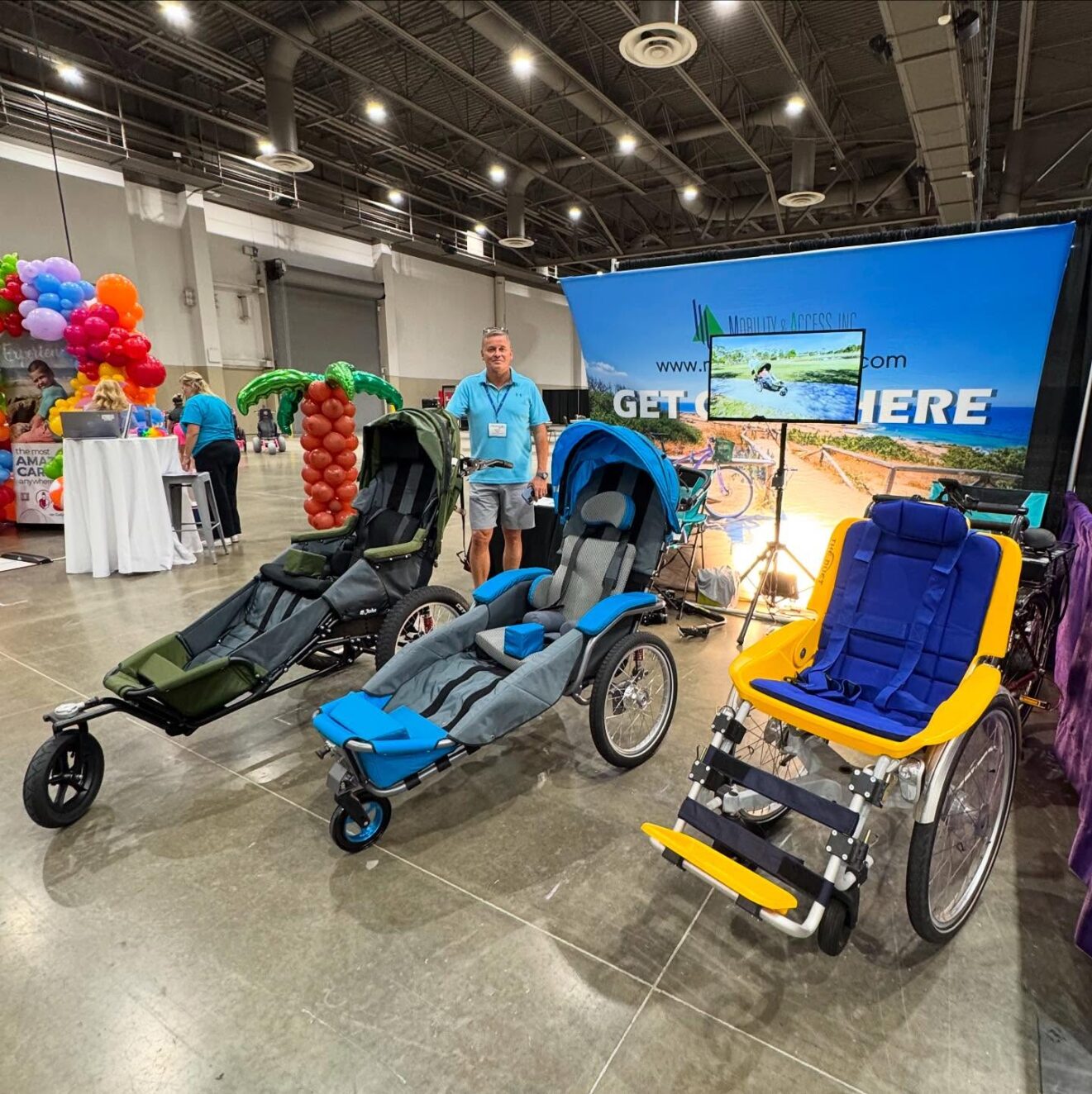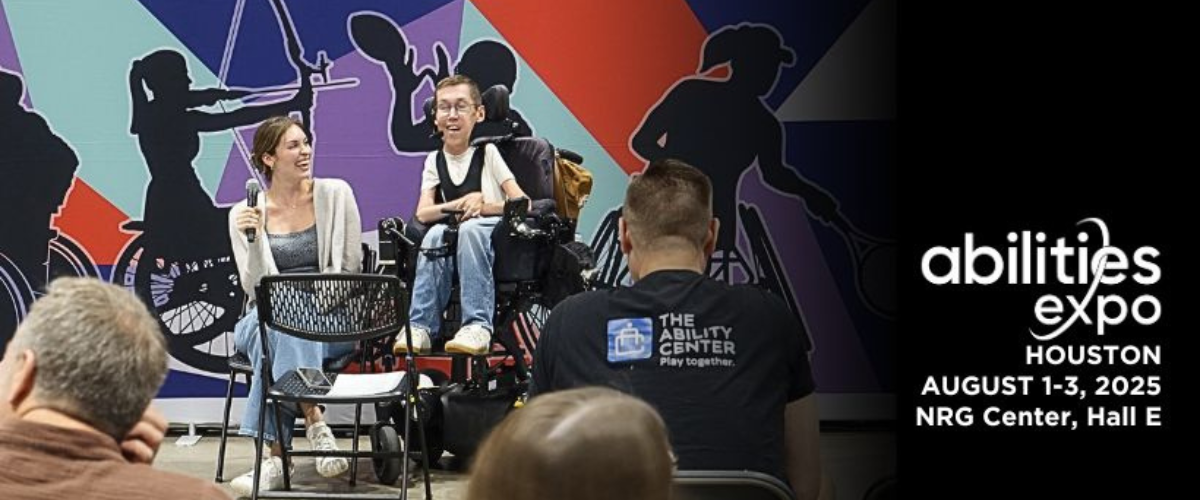This post is dedicated to the Abilities Expo, which held its annual Houston event August 1–3. Other expos featuring assistive technology (AT) include:
- The Assistive Technology Expo from the University of South Carolina School of Medicine.
- The Assistive Technology Industry Association (ATIA) Conference.
- The ATSNZ Disability Expo, held in New Zealand.
- The Colorado Assistive Technology Expo, from the University of Colorado Denver.
- The CSUN Assistive Technology Conference, from California State University.
If you don’t use assistive technology yourself, or if all your technology fits on a smartphone, your first AT expo may seem more crowded than you expected. Not just because of high attendance, but because you’re surrounded by fellow attendees using different types of assistive technology.
In a typically diverse crowd, one in every 50–100 people might be using a wheelchair or other mobility/navigation aid. At most AT-focused events, the percentage is considerably higher. And each attendee needs roughly:
- 6 square feet of space if standing unaided
- 8 square feet of space if accompanied by a service dog
- 9 square feet of space if navigating with a white cane
- 10 square feet of space if in a wheelchair
Too small an expo venue can push accessibility limits—and occasionally safety limits, especially when scooter/power wheelchair users and white-cane users have to navigate around each other in close quarters.
Looking for an Accessible Expo
If it’s important to you that an AT expo be extra accessible, advance research is recommended.
- Ask disabled friends, acquaintances, and social-media contacts for expo recommendations.
- Review the website for any expo you’re considering. Check official schedules, FAQ pages, and past-expo reports for clues to special accommodations and potential challenges. If you still have questions, look for a “Contact” page where you can request personalized answers.
- Many expos have their own social-media pages/groups and apps—useful tools for checking what past attendees say about the experience.
- Visit the exposition venue’s website as well. Does it talk about accessibility considerations? Has it hosted AT expos in the past? How many accessible restrooms/parking spaces does it have? (The more the better—they’ll be in high demand.)
- Remember to also check on transportation and parking—including shuttles from the parking area—to find the best options for getting to the expo in the first place.
Features of an Accessible Expo
- Extra-wide aisles.
- Expo maps that work for people with sight/hearing limitations or intellectual disabilities.
- Low tables at registration desks/expo booths/refreshment stands.
- Clearly visible schedules and other signage.
- Extra seating for people with limited walking stamina. In larger expo halls, scooters or other motorized transportation options.
- Captioned presentations and sign-language interpreters.
- Presentation areas blocked off from crowd noise (for attendees who rely on their hearing to understand the program).
- Sensory-friendly spaces and hours. (This year’s Houston Abilities Expo included its first Early Access Hour, with “dimmed lighting, lower noise and fewer crowds. … a calm and supportive space to explore the event before general admission begins.”)
- Options for attending at least some workshops virtually.
- A history of successful expos, and/or a sponsor organization with a well-established accessibility record. (That’s not to say that “first-time” expos are always a bad idea, but they’re often a plunge into unknown territory.)
- Easy-to-find, clearly detailed information on all the above.



In Conclusion
Probably no expo can check all the above boxes, and that’s okay. Just remember to verify whatever’s important to you (and whoever will be attending with you).
A handful of closing tips:
- Don’t overstretch your (or a companion’s) personal limits.
- Visit the most interesting programs/exhibits first, while your body and brain are fresh. If the most interesting presentation is scheduled for the afternoon, plan on arriving later—or taking a midday break.
- Don’t overload yourself with samples and handouts. Remember that you can visit websites for more information.
- Do, however, get contact information for anyone you want to follow up with personally. Don’t count on finding their text number and email address online, especially if they work for a large organization.
- Accept that you can’t have everything go flawlessly, but you can be proactive and manage your visit for the best possible experience.

